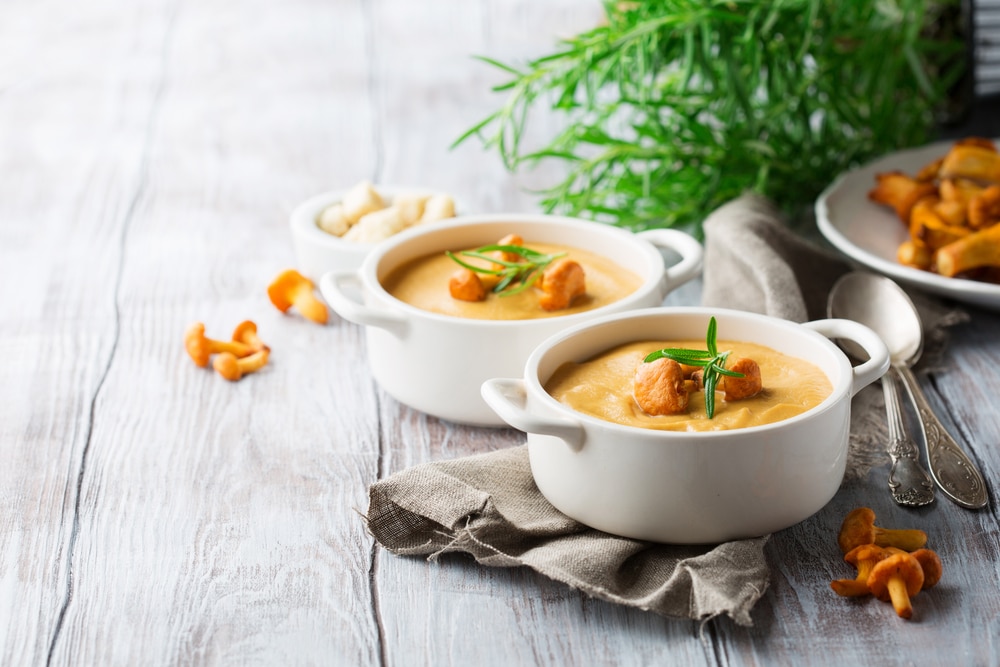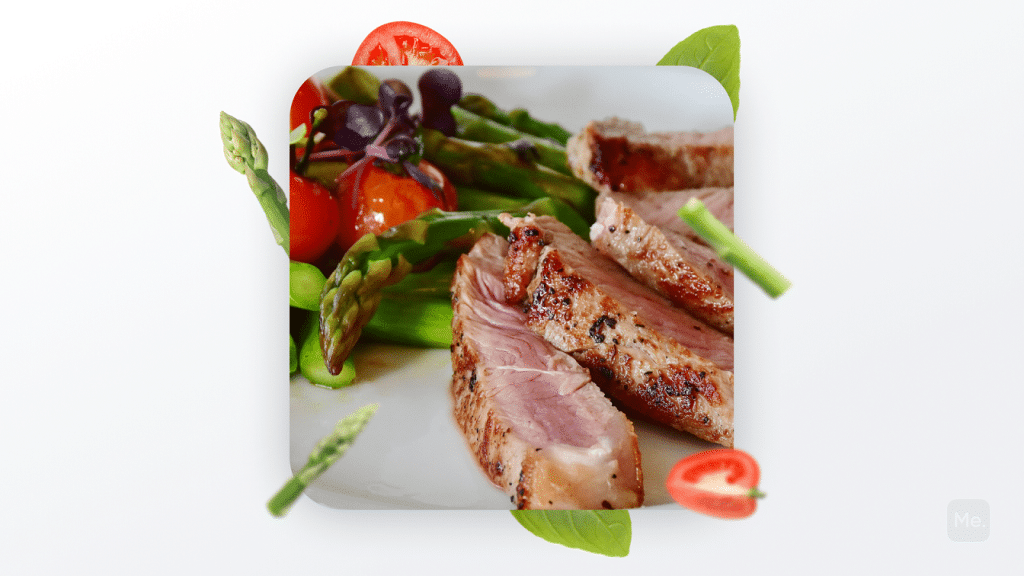Food is the fuel that runs our bodies, but it is not as simple as it may sound. With each passing day, humans continue to discover food and how their bodies react to it. Even though it is not rocket science to know that different types of food have other effects on the human body, sometimes it calls for an expert’s intervention to explain how and why our bodies react a sure way to specific foods. One of the areas that have elicited interest is the thermic effect of food (TEF).
The modern era has made it almost impossible not to consume processed foods, which may play a role in increasing overweight and obesity. It is for this reason that many people are seeking effective methods for weight management. One of the adjustable components of how the body spends energy is the thermic effect of food, and understanding it may be crucial in weight management.
What Is Meant By Thermic Effect of Food (TEF)?
The Thermic Effect of Food is the energy the body expends to digest, absorb, and store nutrients consumed through food (proteins, carbohydrates, and fats).
Each macronutrient has a distinct thermic effect, with proteins exhibiting the highest TEF (approximately 20-30% of the energy intake), followed by carbohydrates (5-10%) and fats (0-3%). This means the body uses more energy to process proteins compared to carbohydrates or fats. So, a protein-rich diet may lead to increased satiety, weight loss, and better body composition.
The Thermic Effect of Food generally constitutes around 10% of a person’s overall daily energy expenditure.
What Is The Thermic Effect Of Food?
The thermic effect of food, which is also referred to as diet-induced thermogenesis (DIT) or specific dynamic action (SDA), is how some of the calories in the food consumed are used in digesting, absorbing, metabolizing, and storing the remaining energy from that food. Some of the calories are burned off as heat. Simply put, TEF is the amount of energy the body requires to digest and process food (8).
However, not all foods are the same. How big or small your energy expenditure is for metabolism is partially dependent on what you are eating. That is why people who are keen on knowing how to burn fat quickly turn to thermic foods.
It is apparent that food does not inherently burn fat directly. Instead, it is more about the energy utilized to digest it and absorb it that determines whether the food can be said to increase diet-induced thermogenesis and to what extent (3).
The Role Of Insulin In The Thermic Effect Of Food
Insulin is the hormone secreted by the body to transport glucose into your cells to release energy and help control your blood sugar levels. What is interesting about insulin is that it also functions as a fat-storage hormone, thus making its effect somewhat of a double-edged sword.
What does this mean in terms of the TEF? Naturally, those foods which crank up the release of insulin will lead to more fat storage because insulin inhibits lipolysis (7).
However, it is essential to note that insulin release by the body is a normal process and that weight gain usually stems from an energy surplus (for example if you are consuming more energy than you need). Otherwise, your body is designed to utilize that food for energy first and foremost, and then the “surplus” is stored as fat.
Whether you’re a workout beast or just a beginner making your first foray into the world of fitness and dieting – BetterMe has a lot to offer to both newbies and experts! Install the app and experience the versatility first-hand!
What Influences A Food’s Thermic Effect?
One of the common mistakes made by most people is to think that a portion of food takes the same amount of energy to digest regardless of the person, but this is never the case. Some of the factors that have been noted as influencing the thermic effect of food include:
-
Age
TEF may be significantly lower in older people because of the differences in digestive capabilities and decreased sympathetic activity.
-
Physical Activity
While there is no universal agreement on whether physical activity increases or decreases the TEF, there is no denying that it influences energy expenditure. Research has been conducted to show that TEF may be altered in physically trained individuals owing to the confounding effects of body composition and physical fitness and not forgetting insulin resistance (10).
-
Meal Size
As you consume bigger meals, the body’s energy expenditure will be higher.
-
Meal Composition
How large the thermic effect of food is can be influenced by the composition of your meal. Therefore, those meals containing carbohydrates and proteins take more energy to process because fat has little impact on TEF.
-
Meal Frequency And Timing
There is a notion that eating smaller but more frequent meals boosts the body’s metabolism, hence helping out with weight loss.
-
Bodyweight
The TEF response is believed to be blunted in people who have obesity or insulin resistance (which can be caused by excess body fat). While the differences are minor, they can add up over time and impact the TEF (6).
How To Measure TEF?
The thermic effect of food is an estimation that is produced in a science lab. This is because TEF can only be calculated in a controlled environment. The ideal way of measuring TEF is when comparing the calories burned in the fed versus fasting state.
Foods With High Thermic Effect
- High-fiber foods
- Lean animal & plant-based proteins
- Dark leafy greens
- Nuts and legumes
- Eggs
- Dairy products
- Seafood
- Citrus Fruits
5 Thermic Foods
There is no secret on how to burn fat fast other than focusing on what you are eating and how much you are moving. Below are some of the foods that have shown to boost metabolism, albeit temporarily (1):
-
High-Fiber Foods
High-fiber foods are among the top 5 thermic foods. Removing refined grains from your diet and replacing them with fiber-rich whole grains has the potential of causing positive benefits on energy regulation and metabolism. This is because high-fiber foods increase the rate of metabolism. Examples of high-fiber foods include fruits, vegetables, whole grains, seeds, nuts, and legumes such as:
Read More: High Fiber Diet: What To Eat To Ensure A Smooth-Running Digestion?
-
Lean Animal & Plant-Based Proteins
High-quality protein foods offer the highest thermic effect. In addition to that, they also provide a higher degree of satiety. This is good for people watching their weight because apart from burning more calories, they will also reduce the number of meals they take.
How do lean animal proteins achieve this? The influence on satiety of these foods is high because of their ability to keep blood sugar levels stable, which prevents the sharp, temporary ups and downs in blood glucose brought about by hunger pangs.
To make the most out of such fat-burning foods, you should choose your favorite lean proteins to add to your nutrition plan. Also, try to go for whole and minimally processed foods that contain limited added sugars and synthetic fats (13).
Like animal proteins, plant-based proteins have the same effect when it comes to boosting metabolism. This is because such foods require the body to utilize more energy in digesting them, which in turn increases the thermic effect. It is believed that the high demand for oxygen for metabolizing protein foods could be what causes an increase in satiety.
Some of these foods include:
- Poultry
- Lean meat
- Unsweetened fermented dairy
- Tofu
- Beans
- Lentils
- Nuts
-
Foods Rich In Iron, Zinc, And Selenium
Those, as mentioned earlier, are crucial nutrients for the optimum functioning of the thyroid glands. Remember that the thyroid plays a central role in the regulation of body metabolism.
Some of the foods that contain these nutrients are:
-
Iodine-Rich Foods
Iodine is also essential for the functioning of the thyroid glands hence foods with the nutrient will cause the thermic effect.
Some of the foods that can supply this nutrient in plenty include:
-
Seafood
Naturally, seafood has a very high protein content and may perhaps be the best fat burner. Like other proteins, for every 100 calories consumed from seafood, close to 30 calories are spent during digestion and absorption.
Some of the high-protein seafood you can have in your diet are:
Examples Of Thermic Foods To Include In Your Meal Plan
-
Green Tea
Green tea can potentially offer moderate metabolism-boosting benefits because it has antioxidants called catechins. In particular, there is a catechin by the name EGCG, which helps break down fat. When EGCG is combined with caffeine, the benefits may be enormous in terms of increasing metabolism.
Green tea may also enhance the fat-burning capabilities and thermogenesis of the liver. This process produces heat in the body. In addition to reducing body fat, green tea may also aid in lowering the body’s cholesterol levels. For people doing high-intensity workouts, green tea may also help their bodies repair damaged tissue quickly
-
Coffee
The caffeine in coffee can offer a temporary lift to the metabolic process. It has been suggested that drinking about four cups of coffee daily can result in a 4% reduction in body fat among overweight people.
Apart from boosting metabolism, coffee may also reduce symptoms of Alzheimer’s disease. It also has antioxidants that might reduce the risk for cancer of the uterus and liver. If you are aiming to lose weight, you may want to reduce the amount of sugar and cream in your coffee.
Dropping pounds by the dozens without putting yourself through the wringer is everyone’s weight loss pipe dream. But what if we told you that the BetterMe app can make that happen? Keep yourself in prime shape with our fat-blasting workouts, delicious budget-sparing recipes, and body-transforming challenges with our app!
-
Dark Leafy Greens
There seems to be no healthy diet that lacks greens. Darky leafy greens like spinach, swiss chard, kales, and collard greens have an abundance of the anti-stress nutrient magnesium. There is a direct relationship between stress and weight management, illustrating the importance of such vegetables for those looking for a healthy lifestyle.
Dark leafy greens also contain fat-burning capabilities and can be said to be among the best thermic foods. They supply important fiber and other nutrients, without which achieving overall health can be a great challenge. Such vegetables also help with blood circulation since they contain lots of iron that carries oxygen throughout the body.
-
Lean Meat (Duck, Pork, Red Meat, Chicken, And Turkey)
Lean meat has a high thermic effect which can be associated with the high costs of peptide bond synthesis (bonds that hold amino acids together) and costs of gluconeogenesis (formation of glucose from non-carb starting materials) and ureogenesis (formation of urea).
-
Avocados
Avocados are rich in unsaturated fats, which are good for heart health. These fruits contain heart-healthy fats and fiber, which play a key role in keeping you full longer, thus preventing unnecessary cravings. The fruits also have potassium which helps prevent water retention as well as bloating.
The fat-burning properties of avocados are attributed to their magnesium. This element is important for healthy weight loss because it activates several enzymes which control digestion, absorption, and the use of proteins, fats, and carbs. Magnesium is also responsible for aiding insulin to open cell membranes for glucose, which keeps blood sugar in check, thus aiding weight loss.
-
Water
You may be so focused on thermic foods and forget how important water is. All your body parts require water to perform at their best level, and this includes metabolism. When the body is dehydrated, it burns up to 2% fewer calories, which could be a challenge to your weight management.
-
Eggs
Eggs give the body the perfect mix of protein and fats, which produce a long-lasting satiety effect. As a result, they can reduce cravings and uncertain drops in blood sugar levels. Each egg has more than 6g of protein, making them an excellent option for thermic foods that boost metabolism. They can be a great alternative to lean meats, especially for people who do not consume meat.
-
Citrus Fruits
Citrus fruits such as oranges have Vitamin C, which boosts the immune system, but they also have metabolic benefits worthy of mentioning thermic foods.
In the case of oranges, they have high soluble fiber. It is important to keep your gut bacteria healthy, which may reduce your appetite, and ultimately eliminate unwanted fat. Another example of citric fruit with a thermic effect is grapefruit.
Read More: Does Coconut Oil Break a Fast or Help Secure Your Fasting Success?
-
Wild-Caught Seafood
Wild-caught seafood is a rich source of omega-3 fatty acids, which play an essential role in reducing inflammation. Such foods have a high protein concentration that boosts energy expenditure during digestion, thus increasing the thermic effect (11).
-
Chili Peppers
Chili pepper has a bioactive component known as capsaicin. It is a very efficient fat-burner because of its ability to promote thermogenesis. No wonder when you eat pepper, the body temperature rises quickly, and you start to sweat. Hence you burn more calories in the process. Chili pepper has many benefits, including reducing inflammation, boosting cardiovascular health markers, increasing metabolic rate, and causing positive effects on respiratory quotient and appetite.
-
Turmeric
It does not matter what health benefits you are seeking; turmeric is a must-have. This ingredient is useful on many fronts. It can fight inflammation, reduce pain, and boost metabolism. One of its components is curcumin which may help control obesity because it interacts directly with adipocytes (fat cells), hepatic stellate cells, pancreatic cells, muscle cells, and macrophages (9).
-
Sweet Potatoes
Sweet potatoes are a good source of fiber and beta-carotene, but they also have an excellent thermic effect. This can be attributed to their fiber and protein content.
-
Nuts
Although nuts have a very high calorie and fat content, they are still very beneficial for metabolism. This can be attributed to the lipids they contain, which are absorbed sluggishly. As a result, there is a small but sustained source of the substrate that fuels thermogenesis.
Nuts and seeds have high magnesium content. Seeds and nuts (the likes of almonds, pumpkin seeds, and pecans) have healthy fats that may help reduce belly fat. They also have essential fatty acids such as Omega 3s, which are crucial in fighting inflammation and repairing the damage caused by it.
The Bottom Line
A healthful diet is central to regulating metabolism hence the reason for the inclusion of thermic foods. However, you must keep in mind that you will not boost metabolism to the level you want only by consuming thermic foods. You must also drink enough water because staying hydrated can decrease body weight as well as BMI. You must also have enough sleep because it promotes not only metabolism but also overall health. Lastly, physical activity such as strength and resistance training is what will help you burn fat within a short time.
DISCLAIMER:
This article is intended for general informational purposes only and does not address individual circumstances. It is not a substitute for professional advice or help and should not be relied on to make decisions of any kind. Any action you take upon the information presented in this article is strictly at your own risk and responsibility!
SOURCES:
- Best 10 foods to boost metabolism (2019, medicalnewstoday.com)
- Chart of high-fiber foods (2021, mayoclinic.org)
- Diet induced thermogenesis (2004, pubmed.ncbi.nlm.nih.gov)
- Eat seafood the healthy way (2013, health.harvard.edu)
- Foods High in Zinc (nd, webmd.com)
- Independent effects of obesity and insulin resistance on postprandial thermogenesis in men (1992, ncbi.nlm.nih.gov)
- Insulin resistance is not associated with thermogenic effect of a high-fat meal in obese children (2014, ncbi.nlm.nih.gov)
- Measuring the thermic effect of food (1996, pubmed.ncbi.nlm.nih.gov)
- Targeting Inflammation-Induced Obesity and Metabolic Diseases by Curcumin and Other Nutraceuticals (2011, ncbi.nlm.nih.gov)
- The influence of thermic effect of food on satiety (1998, pubmed.ncbi.nlm.nih.gov)
- Thermic effect of a meal and appetite in adults: an individual participant data meta-analysis of meal-test trials (2013, ncbi.nlm.nih.gov)
- Top Foods High in Iodine (2020, webmd.com)
- What is the difference between animal and plant proteins? (2018, medicalnewstoday.com)


















